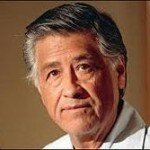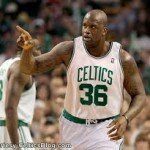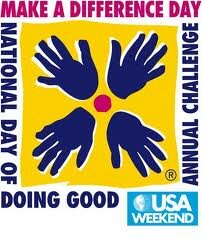by Kienan Lacey, Manager of Marketing and Development, generationOn.
Heroes.
Everyone has a hero in their life.
Whether it’s a superhero or a family member, we all have heroes we look up to. But not all of us realize that we can be heroes too!
It doesn’t matter how old you are or where you live. We can all be heroes by taking action and volunteering.
 I work at generationOn, the newly-created youth service division of Points of Light Institute, an organization that inspires, equips and mobilizes people to take action that changes the world. At generationOn, we believe in the power of KIDS to change the world, and the power of volunteering to change the lives of kids. This is why I am so excited for the launch event of generationOn this Saturday, October 23, 2010 (9:30 a.m. – 12:00 p.m.), at the Extra Mile – Points of Light Volunteer Pathway in the heart of Washington, D.C.!
I work at generationOn, the newly-created youth service division of Points of Light Institute, an organization that inspires, equips and mobilizes people to take action that changes the world. At generationOn, we believe in the power of KIDS to change the world, and the power of volunteering to change the lives of kids. This is why I am so excited for the launch event of generationOn this Saturday, October 23, 2010 (9:30 a.m. – 12:00 p.m.), at the Extra Mile – Points of Light Volunteer Pathway in the heart of Washington, D.C.!
I have planned many service ev ents over the years, but nothing like this before! The generationOn launch event is not just a day or service- it is the start of a service movement- a global service movement- that will teach all kids that they can be heroes in their community by volunteering.
ents over the years, but nothing like this before! The generationOn launch event is not just a day or service- it is the start of a service movement- a global service movement- that will teach all kids that they can be heroes in their community by volunteering.
Just steps outside of the White House, hundreds of kids will participate in meaningful service projects like creating fleece scarves for the elderly or decorating reusable tote bags to help the environment. And everyone will have the unique opportunity to go on a tour of the Extra Mile, my most favorite monument in Washington, D.C. This amazing monument is so special because it honors American heroes who changed our world for the better through service. Kids will learn about Martin Luther King Jr., Susan B. Anthony, Helen Keller, and more!
With the support of a generous, $5 million investment by the Hasbro Children’s Fund, generationOn is helping young people develop into healthy, empowered, creative problem-solvers and global leaders.
October 23rd will be a historic day for our next generation of heroes. I am proud to work at generationOn and hope that everyone will join me and the generationOn movement!
This is the time! Become a hero! Make your mark and make a difference!
Kienan Lacey is the Manager of Marketing and Development at generationOn. She become involved with the organization as a volunteer and has worked there for the last three years. Kienan was born and raised in New York City and graduated from Santa Clara University.

 Friends,
Friends, Points of Light Institute will launch
Points of Light Institute will launch  The
The  Singer
Singer 
 by ,
by , 
 Our family works to volunteer our time, money and support to the Diabetes cause as much as we can. We ask friends and family to support us as a family as we Walk for a Cure. And then we match the overall cash contribution we raise with our own funds. I also hand out fliers to my church group, my PTO and my bookclub.
Our family works to volunteer our time, money and support to the Diabetes cause as much as we can. We ask friends and family to support us as a family as we Walk for a Cure. And then we match the overall cash contribution we raise with our own funds. I also hand out fliers to my church group, my PTO and my bookclub.




 In our session today, we hope to gather the collective wisdom of those in the room to create a more complete list, but as we head in to our workshop, I’ve outlined a few of our ideas for applying the best practices of traditional volunteer management to distributed action in the social space.
In our session today, we hope to gather the collective wisdom of those in the room to create a more complete list, but as we head in to our workshop, I’ve outlined a few of our ideas for applying the best practices of traditional volunteer management to distributed action in the social space. Make folks feel part of something larger than themselves – all of us want to find meaning in our lives. You’re not just asking for help, you’re offering people an opportunity to contribute, to participate in making a difference. Let this help you overcome your fear that you’re burdening folks with your request.
Make folks feel part of something larger than themselves – all of us want to find meaning in our lives. You’re not just asking for help, you’re offering people an opportunity to contribute, to participate in making a difference. Let this help you overcome your fear that you’re burdening folks with your request. Make it easy – remember volunteers have to be eased into a commitment. Make it quick and easy to take immediate action, ask for specific actions and small commitments first and work up to larger commitments.
Make it easy – remember volunteers have to be eased into a commitment. Make it quick and easy to take immediate action, ask for specific actions and small commitments first and work up to larger commitments. Former Senator Harris Wofford was one of the architects of the original Peace Corps with Sargent Shriver. He spoke yesterday of the unique birth of the Peace Corps. It actually was, in some measure, conceived improvisationally, during a speech at the University of Michigan on Oct. 14, 1960. It was 2:00 am, after one of the Nixon/Kennedy campaign debates, and Senator Kennedy made an obligatory stop, running hours late, expecting that nobody would still be at the planned rally. Instead, he was greeted by 10,000 students in the street. His speech was less than three minutes long, and this is the passage that became the inspiring image of the Peace Corps. Kennedy said:
Former Senator Harris Wofford was one of the architects of the original Peace Corps with Sargent Shriver. He spoke yesterday of the unique birth of the Peace Corps. It actually was, in some measure, conceived improvisationally, during a speech at the University of Michigan on Oct. 14, 1960. It was 2:00 am, after one of the Nixon/Kennedy campaign debates, and Senator Kennedy made an obligatory stop, running hours late, expecting that nobody would still be at the planned rally. Instead, he was greeted by 10,000 students in the street. His speech was less than three minutes long, and this is the passage that became the inspiring image of the Peace Corps. Kennedy said: Kennedy asked those students that night to step up and fufill that vision, saying that “unless you comprehend the nature of what is being asked of you, this country can’t possibly move through the next 10 years in a period of relative strength…I come here tonight to ask you to join in the effort…”
Kennedy asked those students that night to step up and fufill that vision, saying that “unless you comprehend the nature of what is being asked of you, this country can’t possibly move through the next 10 years in a period of relative strength…I come here tonight to ask you to join in the effort…” Several weeks ago, I was privileged to join Points of Light Founder, philanthropist, and UN Special Envoy for Malaria Ray Chambers on a visit to 10 Downing Street to talk with Cabinet Members and key leaders of the new UK coalition government led by Prime Minister David Cameron.
Several weeks ago, I was privileged to join Points of Light Founder, philanthropist, and UN Special Envoy for Malaria Ray Chambers on a visit to 10 Downing Street to talk with Cabinet Members and key leaders of the new UK coalition government led by Prime Minister David Cameron. For example, building off programs underway in Peru and India, Secretary of State Hillary Clinton has launched an initiative to provide 100 million clean stoves to the poor throughout the world by 2020, significantly reducing carbon emissions in developing countries and, even more important, the daily exposure to toxic smoke of the women who do most of the cooking.
For example, building off programs underway in Peru and India, Secretary of State Hillary Clinton has launched an initiative to provide 100 million clean stoves to the poor throughout the world by 2020, significantly reducing carbon emissions in developing countries and, even more important, the daily exposure to toxic smoke of the women who do most of the cooking.

 Olga El Sa-hame-y of New York read about Make a Difference Day in USA Weekend magazine and decided then and there to act. She and her husband Muh-stafa El Sa-hame-y stayed up until 2 am cooking 50 servings of chicken with rice and packaged them with fruit, beverages, and dessert. They drove the meals into Manhattan and met their son Alex and four of his friends. For the next few hours, the seven of them distributed their food to the homeless, seeking them out in doorways, under trees and in subways.
Olga El Sa-hame-y of New York read about Make a Difference Day in USA Weekend magazine and decided then and there to act. She and her husband Muh-stafa El Sa-hame-y stayed up until 2 am cooking 50 servings of chicken with rice and packaged them with fruit, beverages, and dessert. They drove the meals into Manhattan and met their son Alex and four of his friends. For the next few hours, the seven of them distributed their food to the homeless, seeking them out in doorways, under trees and in subways.
